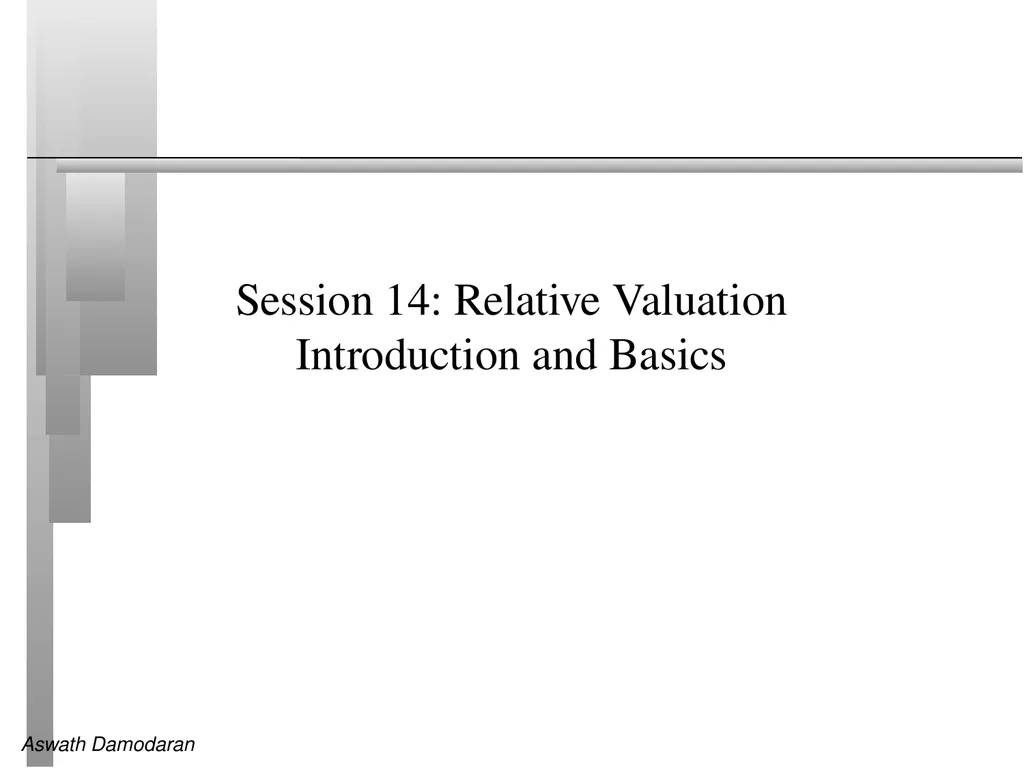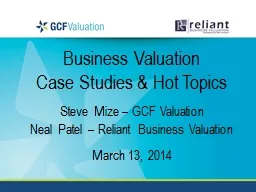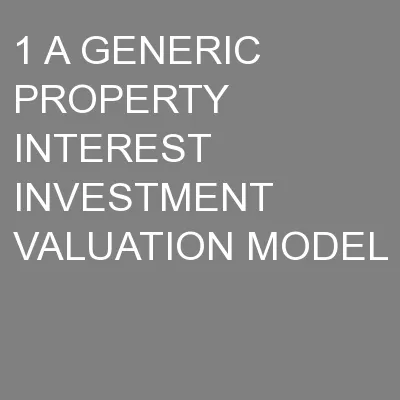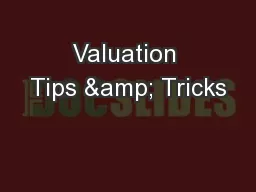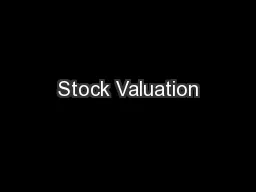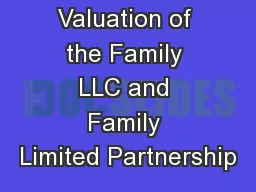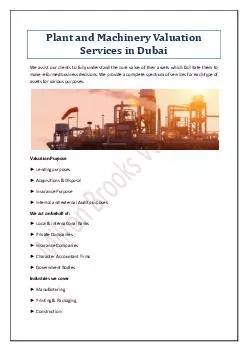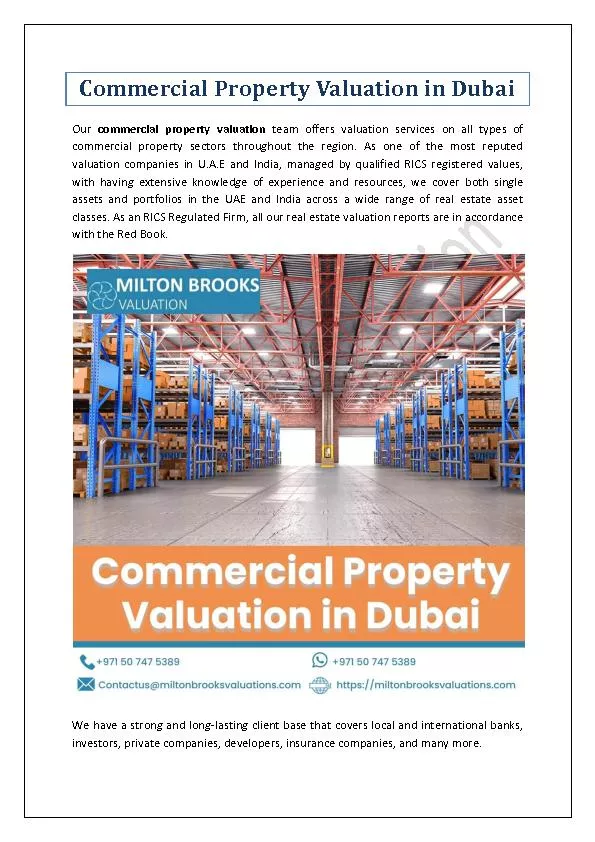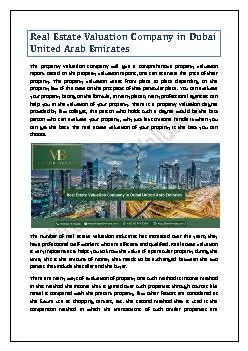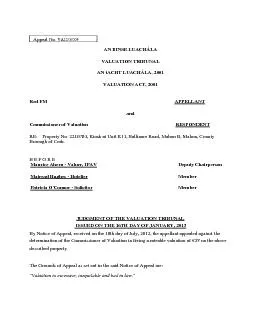Session 14: Relative Valuation Introduction and
Author : lindy-dunigan | Published Date : 2025-06-20
Description: Session 14 Relative Valuation Introduction and Basics The Essence of relative valuation In relative valuation the value of an asset is compared to the values assessed by the market for similar or comparable assets To do relative
Presentation Embed Code
Download Presentation
Download
Presentation The PPT/PDF document
"Session 14: Relative Valuation Introduction and" is the property of its rightful owner.
Permission is granted to download and print the materials on this website for personal, non-commercial use only,
and to display it on your personal computer provided you do not modify the materials and that you retain all
copyright notices contained in the materials. By downloading content from our website, you accept the terms of
this agreement.
Transcript:Session 14: Relative Valuation Introduction and:
Session 14: Relative Valuation Introduction and Basics The Essence of relative valuation? In relative valuation, the value of an asset is compared to the values assessed by the market for similar or comparable assets. To do relative valuation then, we need to identify comparable assets and obtain market values for these assets convert these market values into standardized values, since the absolute prices cannot be compared This process of standardizing creates price multiples. compare the standardized value or multiple for the asset being analyzed to the standardized values for comparable asset, controlling for any differences between the firms that might affect the multiple, to judge whether the asset is under or over valued Relative valuation is pervasive… Most valuations on Wall Street are relative valuations. Almost 85% of equity research reports are based upon a multiple and comparables. More than 50% of all acquisition valuations are based upon multiples Rules of thumb based on multiples are not only common but are often the basis for final valuation judgments. While there are more discounted cashflow valuations in consulting and corporate finance, they are often relative valuations masquerading as discounted cash flow valuations. The objective in many discounted cashflow valuations is to back into a number that has been obtained by using a multiple. The terminal value in a significant number of discounted cashflow valuations is estimated using a multiple. Why relative valuation? “If you think I’m crazy, you should see the guy who lives across the hall” Jerry Seinfeld talking about Kramer in a Seinfeld episode “ A little inaccuracy sometimes saves tons of explanation” H.H. Munro “ If you are going to screw up, make sure that you have lots of company” Ex-portfolio manager So, you believe only in intrinsic value? Here’s why you should still care about relative value Even if you are a true believer in discounted cashflow valuation, presenting your findings on a relative valuation basis will make it more likely that your findings/recommendations will reach a receptive audience. In some cases, relative valuation can help find weak spots in discounted cash flow valuations and fix them. The problem with multiples is not in their use but in their abuse. If we can find ways to frame multiples right, we should be able to use them better. Multiples are just standardized estimates of price… The Four Steps to Understanding Multiples Define the multiple In use, the same
